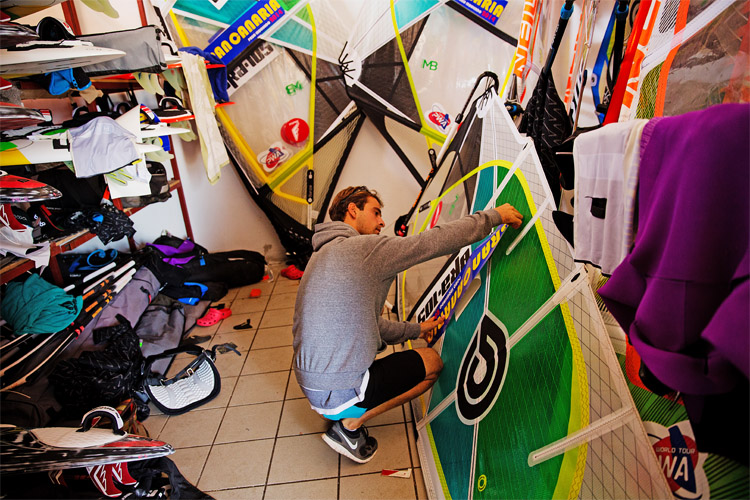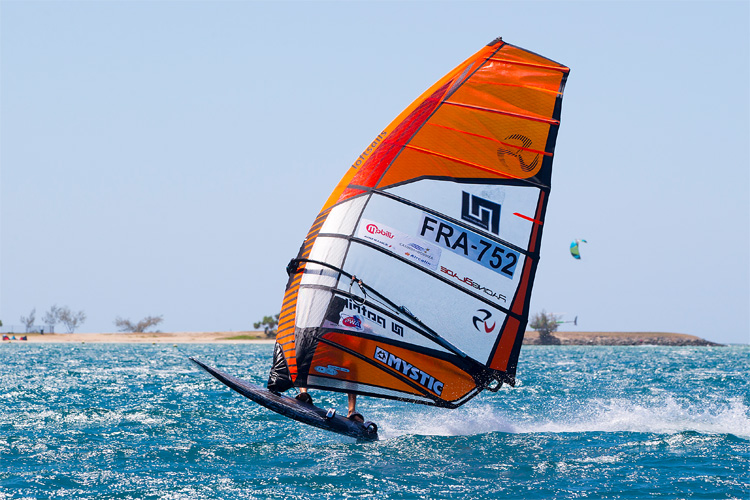Modern windsurfers are confronted with thousands of sail types, sizes, and specifications. If you plan to own more than just a windsurfing sail, take a look at the following quiver-building tips.
The number of variables that relate to a sail is nearly infinite.
And, to make things even more complicated, just add the sailor's height, weight, level of experience, and favorite windsurfing discipline.
Yes, it is never easy to choose a new sail.
But you can make wise decisions based on a series of relevant check boxes. What are they?
A Balanced Quiver
According to Monty Spindler, founder of Loftsails, they are:
- Keeping it simple;
- Picking the sail size that better adapts to your local spot;
- Focusing on a couple of brands;
- Balancing fun and value for money;
- Optimizing what fits the least masts and booms;
- Matching sails with your boards;
- Adopting smaller size gaps in smaller sails and larger gaps in larger sails;
Spindler believes that wind range should play a critical role in gear buying because "wind range means less messing around, and more time and fun on the water."
It is also important to know if you're building the quiver around some existing core items or starting from scratch - modern windsurf boards need less power from the rig, whereas older boards will demand greater drive to get them up and running.

Stretching the Options
The man behind Loftsails considers that you should "stretch" the range of your quiver as much as possible because contemporary sail brands have optimized how many sails their masts will fit.
You should also understand that the difference between a 4.0 and 4.5 is most definitely not the same as between a 7.5 and an 8.0, despite the same difference in square meterage.
"As a general rule, you can go 0.5 increments from 5.5 down, maybe larger gaps if you are heavier."
"Above this, the gaps can be significantly larger. In fact, you can probably jump from 7.8 to that 5.5 straightaway," underlines Monty Spindler.
If you're a recreational windsurfer, don't get a racing sail when a free ride sail delivers more.
Try to build a sail quiver around your core board sizes before extending the options above and below.
Windsurfers who only leave home in 18-knot plus winds can be happy with the following equipment combination: a 95-liter wave/freestyle board (for a rider weighing 85 kilograms), a 5.3 sail (18-24 knots), a 4.8 (24-30 knots), and a 4.2 sail (30+ knots).
If you just want to go sailing in all types of conditions, here's Spindler's suggestion: a 120-liter and 80-centimeter wide free ride/free race/slalom board, a 95-liter wave/freestyle board, a 7.8 rotational or twin cam, and three wave or freestyle, wave/crossover sails;
